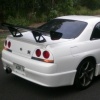Weird noise between 1500-3000 rpm
Announcements
-
Similar Content
-
Latest Posts
-
By joshuaho96 · Posted
I agree once misfires happen it's basically worthless, but the hope is you can see what's happening in the run up to that. -
Ha ha, as long as your shed is well heated!
-
What mods are done to the car? By driving in traffic, does it die while moving, say at 50kmh? Or its when you're sitting idling it wants to die, or when idling and you go to accelerate? When you're idling, how long is it normally idling for time wise before it starts to miss and sputter?
-






Recommended Posts
Create an account or sign in to comment
You need to be a member in order to leave a comment
Create an account
Sign up for a new account in our community. It's easy!
Register a new accountSign in
Already have an account? Sign in here.
Sign In Now